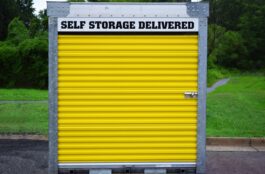
Having your own home is probably one of the most liberating feelings in the world. You do not need to deal with monthly apartment rent, living with loud roommates, or having to follow too many limitations. However, having a home comes with responsibilities.
When you were renting, your landlord was responsible for almost everything. All you needed to do was to clean and pay your rent on schedule. But if you’re a homeowner, you need to make many decisions to protect your house, including calling professionals, like PuroClean of Halton, offering mold remediation services when the need arises. During this process, should you stay or leave home?
What Is Mold Remediation?
Mold remediation includes multiple actions to remove molds and restore the damage in your house caused by molds. It also targets the cause of mold outbreaks to stop it from happening again. The following actions illustrate the standard process:
1. Inspection
The disaster restoration experts will thoroughly look for visible indications of molds. They will also take air samples to figure out the kind of mold, spores, and indoor air quality. Generally, knowing the mold species in your house enables specialists to plan for a suitable strategy.
Additionally, they will identify the sources of molds with areas of concern, including basements, bathrooms, sink closets, as well as window sills.
2. Containment
They will seal all the areas with molds to stop spreading to other areas of your home. They will put physical barriers with negative air chambers and negative air pressure. In addition, your HVAC systems around your house will be shut off since they can relocate spores around that will let mold grow in other places on your property.
3. Air Purification
During the mold remediation process, spores can be disturbed and become airborne. Along with containment, the air inside your house must also be cleaned. They will utilize negative air machines with high-efficiency particulate air filters to run constantly during the process.
This way, mold spores, microbial volatile organic compounds (MVOCs), and other airborne debris will be removed from the affected location.
4. Elimination and Cleanup
Antimicrobial and antifungal substances will clean up the existing mold colonies and help avoid more molds from forming. The cleanup technique depends on where the fungi are growing. For instance, non-porous and hard locations like bathtubs and sinks can be cleaned by wiping and adding safe, approved biocide.
There can be a bigger problem in porous areas, such as wood floors and walls, since mold quickly travels. Thus, the deeper mold growth areas determined during the evaluation will be removed and replaced.
5. Disinfection
As soon as remediation is completed, your entire home must be sanitized. First, furniture, garments, curtains, and other similar things will be cleaned. Then fogging devices will be used to deodorize all your possessions, as well as the indoor air.
What to Do During the Mold Remediation Process
Many house owners wonder if they can stay home throughout the mold remediation process. The answer depends on how big the job is and the location of molds in your property. Though you do not usually need to leave the house for minor projects, the best choice would be to move out during the process.
You may consider staying if the mold is included in just one area or space, wherein you might still use your bathroom and kitchen without going through any contaminated area. In the case of several rooms, hallways, and living with kids or elderly family members, it’s strongly recommended to find alternate housing temporarily. Click here to learn more about another mold service, such as mold removal.


